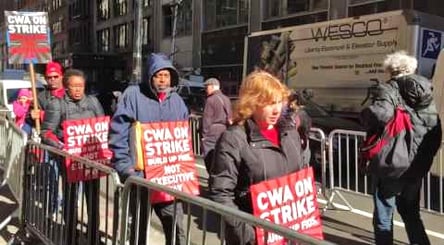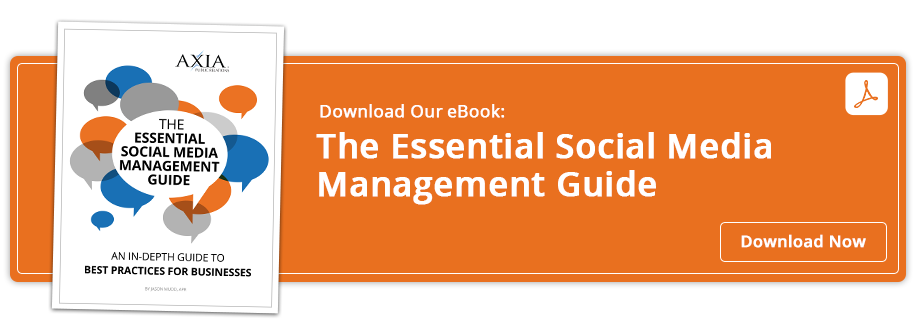 When your CEO creates a firestorm
When your CEO creates a firestorm
An instance of self-induced crisis cleanup began on Wednesday when Verizon workers went on strike over several key issues – which, in itself, wasn’t the crisis.
In the presidential campaign events the next day, both Democratic candidates took to the stage to support various aspects of the Verizon workers’ decision. This is common for politicians; it only became an issue for Verizon when the company’s CEO chose to respond to only one candidate, Bernie Sanders, but remained silent regarding Hillary Clinton’s similar statements on the same day.
He chose:
- the wrong words
- on the wrong platform
- at the wrong time.
The route of “comment” the CEO took on behalf of his company had tremendous backlash. Even worse: It eliminated the public relations process and customer interaction considerations.
Here’s how you can learn from Verizon’s missteps:
- Who said what?
Two candidates jumped on nearly the same issues the striking workers had raised against their employer; however, the CEO rebutted in a personal fashion against one particular candidate. - This would have been a perfect instance to spread the company’s high-level message about business issues, keeping the message on-point.
- Instead the CEO’s actions created a perceived endorsement of a particular candidate (the one he didn’t target or even mention in his informal post).
- What did he say?
While the two presidential candidates both made comments in support of the striking workers’ concerns, the CEO immediately sniped back with more personal language against only one of the candidates and didn’t focus at all on the concerns of his employees. - Had the public relations team been involved, distracting statements or those that appeared to be personal attacks could have been removed from the CEO’s comments, which he posted on a well-known professional blog forum.
- One major role of the public relations team is to serve as an insurance policy against just such flubs.
- Where did it happen?
When comments are made in public forums, context is everything. During campaign season, hot topics for voters will be fodder for garnering support at rallies. The LinkedIn post was followed by tweets from Sanders’ campaign, lending even more credibility to the candidate’s comments and more negative publicity for Verizon. - Verizon should have followed the strategic processes by which companies evaluate “noise” to see what gets traction and how it directly pertains to or reflects on its specific business and product.
- If it had, the company would not have over-reacted, and certainly not so publicly.
- Why did he post it?
The CEO’s personal reaction (to what he heard third-hand) colored a post that was released outside of the official corporate channels. - This particular CEO forgot five important rules.
- If the public relations team had been involved, it may have been able to keep the customer focus and use the strategic process.
- How did this happen?
It’s difficult to manage upward to the level of the C-suite, and when human emotions get involved, that’s when it’s most important to remember that success comes from teamwork.- When the PR team heard the concerns and responded, if any article was even necessary, it would have been balanced and impersonal.
- Most importantly, it would have clarified the issues between workers and management.
Verizon’s PR team has a lot of work to do in order to clean up a problem that didn’t even exist only hours earlier. When the boss creates complications for a company, it’s challenging to repair customer (and employee) relationships.
To improve processes and relationships at your company before they get out of control, consult Axia Public Relations’ Essential Social Media Guide to help you distinguish the right paths for the right messages and reduce negative chatter around your brand’s reputation.

 Heather M. Hilliard is a marketing and strategic planning professional with expertise in crisis management communications. With two master’s degrees and her international Certified Emergency Manager credential, she has worked through disasters as well as “normal business” to offset the impact of both large- and small-scale events in a variety of industries. She is an adjunct professor at Tulane University and has worked for Axia Public Relations since December 2015. Connect with Axia on Twitter @axiapr or tell us what you think in the comments below.
Heather M. Hilliard is a marketing and strategic planning professional with expertise in crisis management communications. With two master’s degrees and her international Certified Emergency Manager credential, she has worked through disasters as well as “normal business” to offset the impact of both large- and small-scale events in a variety of industries. She is an adjunct professor at Tulane University and has worked for Axia Public Relations since December 2015. Connect with Axia on Twitter @axiapr or tell us what you think in the comments below.
Featured image credit: Creative Commons
Topics: public relations, crisis communications, shared media


Comment on This Article